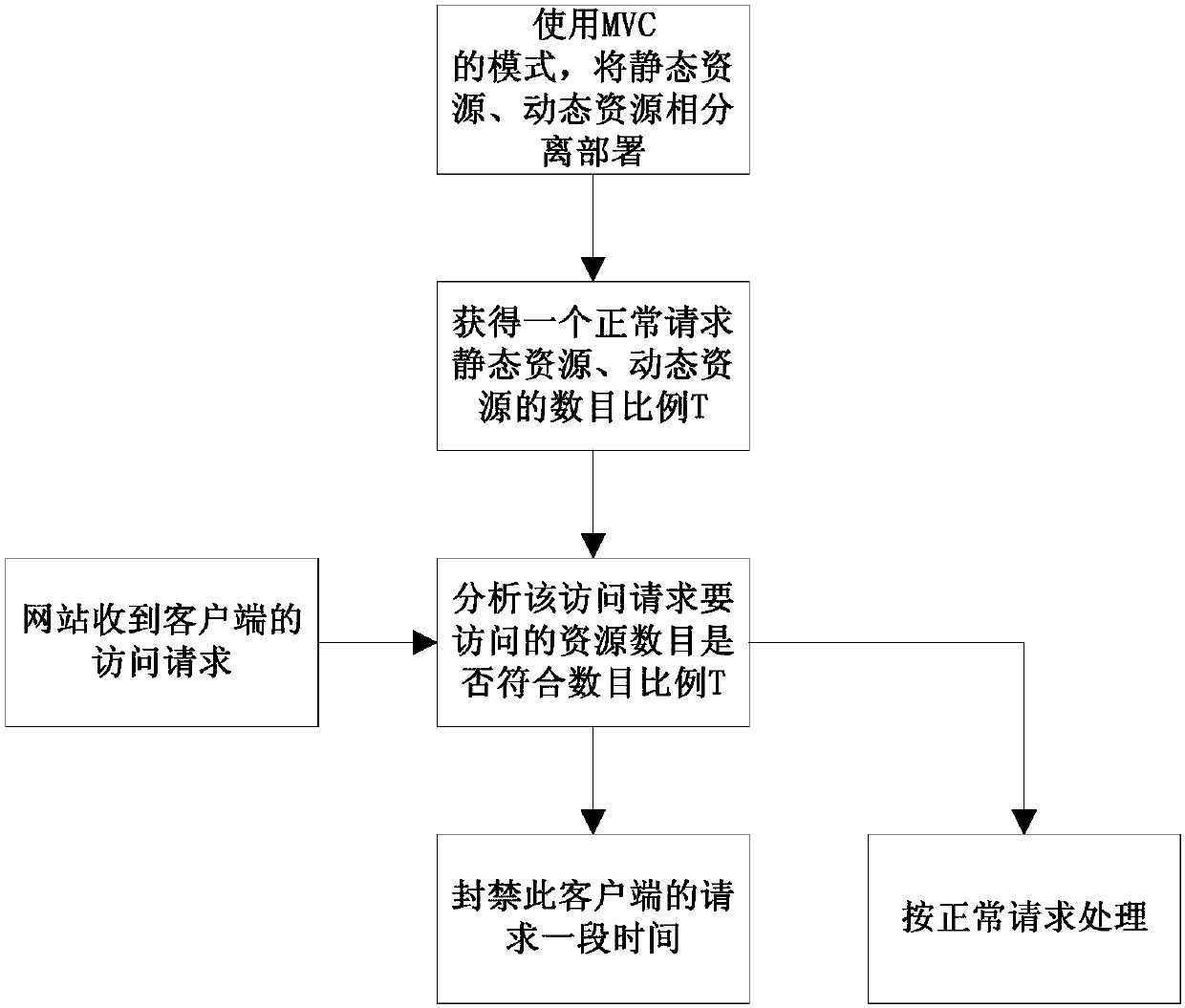Anti-crawler method based on access behaviors
An anti-crawler and behavioral technology, applied in the field of anti-crawler based on access behavior, can solve the problem that the anti-crawler method is difficult to distinguish malicious requests, and achieve the effect of reducing reusability, low cost, and improving security
- Summary
- Abstract
- Description
- Claims
- Application Information
AI Technical Summary
Problems solved by technology
Method used
Image
Examples
Embodiment Construction
[0016] In website development, the development model of MVC is generally followed, and the front end is responsible for the display of data. The displayed pages can be divided into static resources and dynamic resources. During deployment, static resources and dynamic resources are deployed separately. A normal complete request model includes both access to static resources and access to dynamic resources. Dynamic resources are the content that crawlers are interested in. Based on this, the following embodiments determine those that do not conform to the normal request model as malicious requests (crawlers).
[0017] Therefore, the embodiment provides an anti-crawler method based on access behavior, such as figure 1 shown, including steps:
[0018] A. In the website design stage, use the MVC model to separate and deploy static resources and dynamic resources;
[0019] B. Through manual analysis and / or log analysis and / or traffic analysis, obtain the ratio T of the number o...
PUM
 Login to View More
Login to View More Abstract
Description
Claims
Application Information
 Login to View More
Login to View More - R&D Engineer
- R&D Manager
- IP Professional
- Industry Leading Data Capabilities
- Powerful AI technology
- Patent DNA Extraction
Browse by: Latest US Patents, China's latest patents, Technical Efficacy Thesaurus, Application Domain, Technology Topic, Popular Technical Reports.
© 2024 PatSnap. All rights reserved.Legal|Privacy policy|Modern Slavery Act Transparency Statement|Sitemap|About US| Contact US: help@patsnap.com








